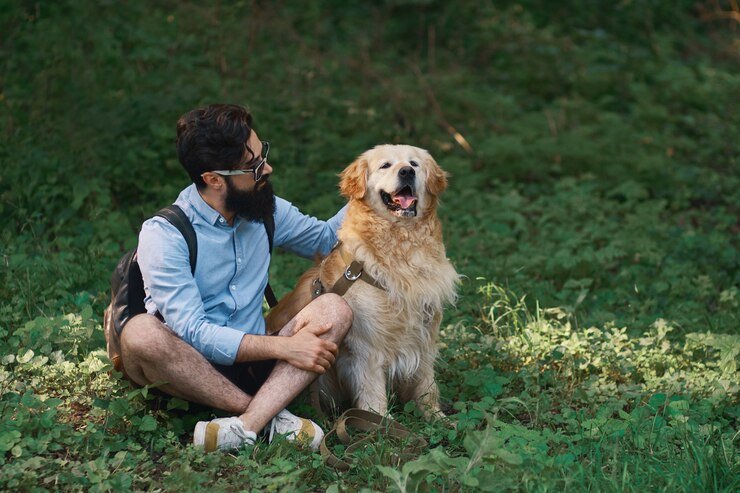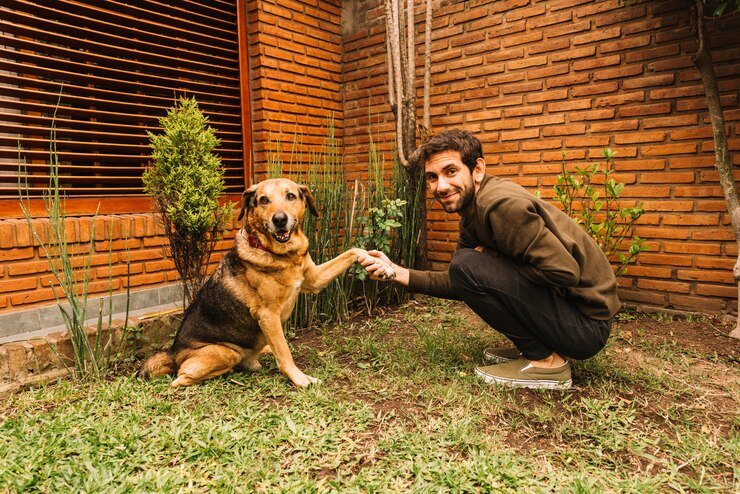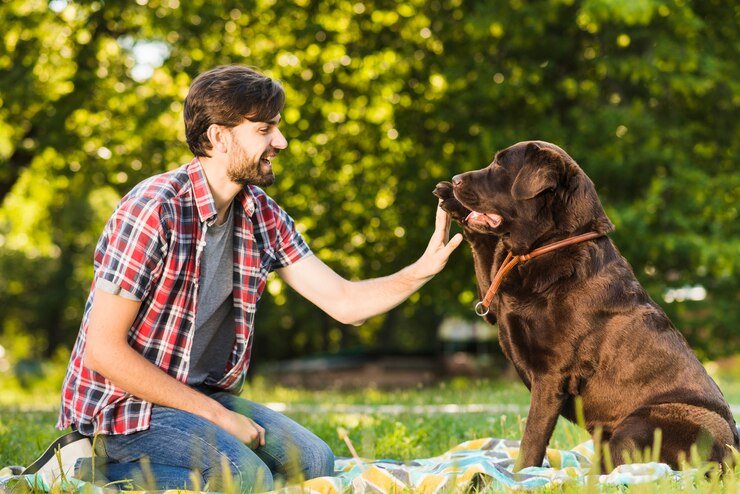Why are dogs called canines?
Have you ever wondered Why Are Dogs Called Canines? Dogs are called canines because “canine” is a term that refers to animals in the dog family. The word comes from the Latin word “canis,” which means dog. So, when we say “canine,” we’re talking about dogs and other related animals, like wolves and foxes. It’s a way of grouping them together based on their family relationship.

Language Usage and Cultural References
Dogs are commonly referred to as “canines” due to the prevalence of this term in everyday language and cultural references. The use of “canine” in everyday language often reflects a more formal or scientific way of talking about dogs. People may choose to use “canine” when they want to sound technical or describe dogs in a broader context that includes their relatives like wolves and foxes.
Additionally, the term “canine” is embedded in cultural idioms, expressions, and metaphors that portray certain attributes associated with dogs. For example, idioms like “a dog’s life” or “working like a dog” convey specific qualities or behaviors commonly associated with canines, further solidifying the connection between dogs and the term “canine” in our language and culture.
The Scientific Tapestry – Dogs in the Canidae Family
Exploring the Canidae Family
Dogs are fascinating creatures that belong to the Canidae family, a scientific classification that includes various members sharing common traits. Let’s take a closer look at this family tree to understand the relationships between our furry friends and their relatives.
Shared Ancestry: Dogs and wolves, for example, share a common ancestor. Over time, they adapted to different environments, leading to the diversity we see today.
Diverse Traits: Each member of the Canidae family has unique traits. Dogs come in various breeds, wolves form strong social packs, and foxes showcase intelligence and adaptability.
In short, the Canidae family is a fascinating tapestry of shared history and diverse qualities, connecting our beloved dogs to their wild relatives, the wolves, and the clever foxes.

Canines in Nature – Biological Traits
Biological Features of Dogs
Dogs, as part of the Canidae family, exhibit distinct biological traits that define their nature. Let’s delve into these defining characteristics that set them apart within the fascinating world of the Canidae family.
Defining Traits that Categorize Dogs: Biological features like their keen sense of smell, sharp teeth, and sociable nature are key traits that categorize dogs within the Canidae family. These features contribute to their roles as both companions and hunters.
Unique Characteristics within the Canidae Family: Within the Canidae family, dogs showcase unique characteristics that make them stand out. From their diverse breeds to their ability to form close bonds with humans, these traits highlight the remarkable diversity within the canine world.
The Final Bark
As we reflect on linguistic nuances and biological intricacies, it becomes clear that calling dogs “canines” is not just a term; it encapsulates a rich history and a deep connection between humans and these remarkable creatures.
Closing Thoughts on Appreciating the Intricacies Behind “Canine”:
Understanding the linguistic and biological aspects behind the term “canine” enhances our appreciation for the diverse and fascinating world of dogs. It invites us to recognize the depth of our bond with these loyal companions, transcending language and delving into the very essence of their being.
People also search for
Why Are Dogs Called K9?
Dogs are called “K9” as a shorthand derived from the term “canine.” The letter “K” represents the initial sound of the word “canine,” and “9” phonetically resembles the ending sound. This abbreviated term is commonly used in various contexts, especially in law enforcement and military settings, to refer to dogs trained for specific roles such as police or service dogs. The term “K9” highlights their canine nature and their valuable contributions in various roles.
Here are some similar words to “canines”:
- Dogs
- Pooches
- Hounds
- Canids
- Pups
- Fidos
- Four-legged friends
- Man’s best friend
- Domesticated wolves
- Companions

FAQs: Why Are Dogs Called Canines?
Q: Why are dogs called canines?
A: Dogs are called canines because they belong to the Canidae family, which also includes wolves, foxes, coyotes, and jackals. The word “canine” comes from the Latin word “canis,” which means “dog.” So, saying “canine” refers not just to your beloved Fido, but to all members of this diverse group of animals.
Q: Do all dogs have canine teeth?
A: Yes, all dogs and other canines have four pointed teeth located near the front of their mouths, called canine teeth. These teeth are essential for tearing and gripping food, a trait adapted from their wild ancestors. Humans also have canine teeth, although they’re smaller and less prominent.
Q: What are some other names for canines?
A: While “canine” is the scientific term for members of the Canidae family, they can also be called:
Canids: A broader term encompassing all animals in the Canidae family.
Wild dogs: Refers specifically to undomesticated canines like wolves and foxes.
Pooches, hounds, pups: Informal terms for dogs specifically.
Q: Are all canines related to dogs?
A: Yes, all canines are related to dogs through a common ancestor that lived millions of years ago. Over time, they evolved and adapted to different environments, leading to the diverse species we see today. While dogs have been domesticated for over 15,000 years, they still share many physical and behavioral similarities with their wild relatives.
Q: Where can I learn more about canines?
A: There are many resources available to learn more about canines, including:
Museums and zoos: Many museums and zoos have exhibits dedicated to canines, showcasing their biology, behavior, and conservation efforts.
Animal shelters and rescue organizations: Visiting shelters and rescue organizations can teach you about different breeds and the importance of responsible pet ownership.
Libraries and online resources: Books, websites, and documentaries offer a wealth of information about canines, from their history and evolution to their unique abilities and ecological roles.
Bonus Fact: In the United States, police and working dogs are often referred to as K-9 units. The “K” is derived from the phonetic pronunciation of “canine,” making it a convenient shorthand term for these loyal and dedicated animals.
By understanding why dogs are called canines and exploring their remarkable connection to other members of the Canidae family, we can appreciate these fascinating creatures even more. So next time you encounter a dog, remember: you’re not just seeing a furry friend, but a living link to a rich evolutionary history and a vibrant part of our natural world.













